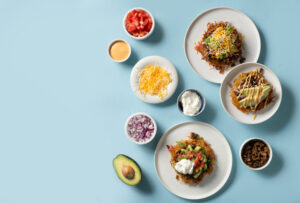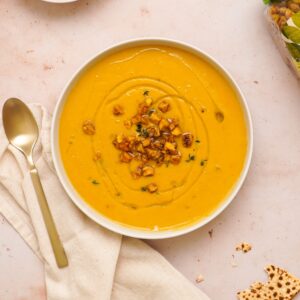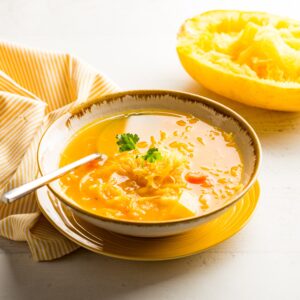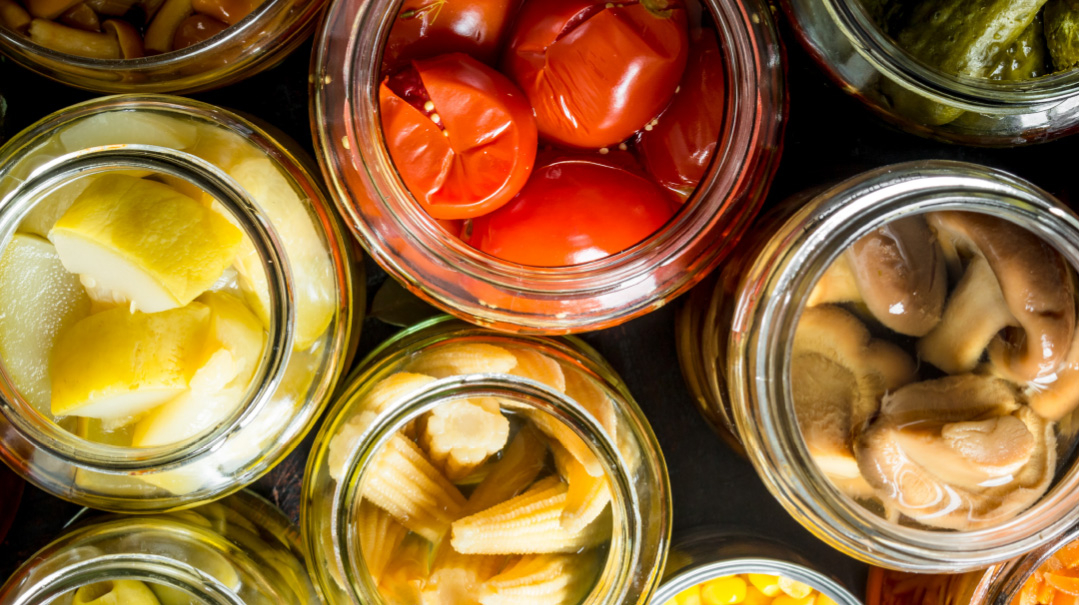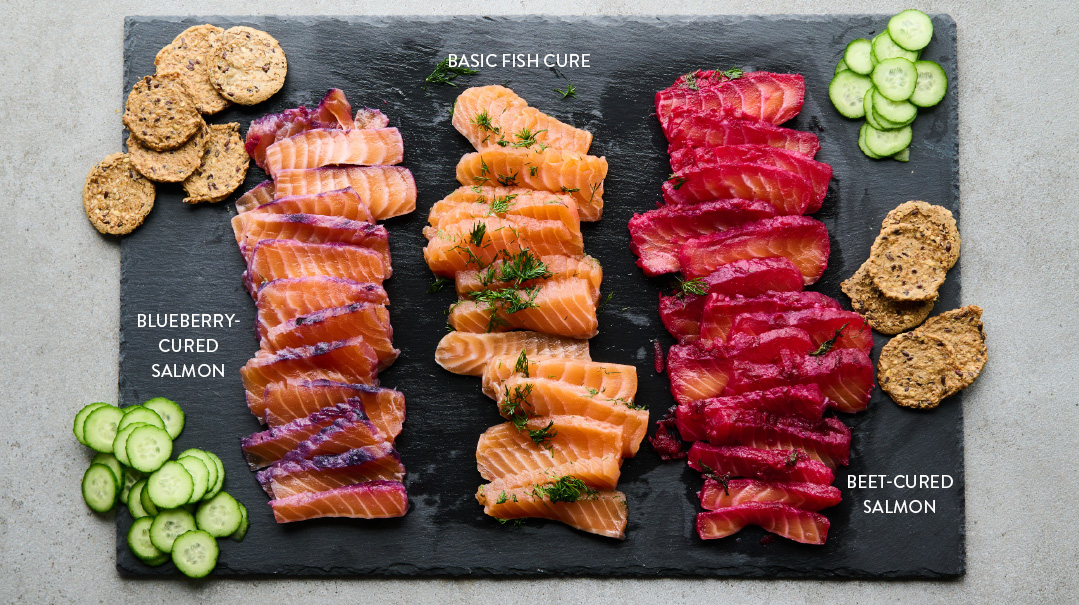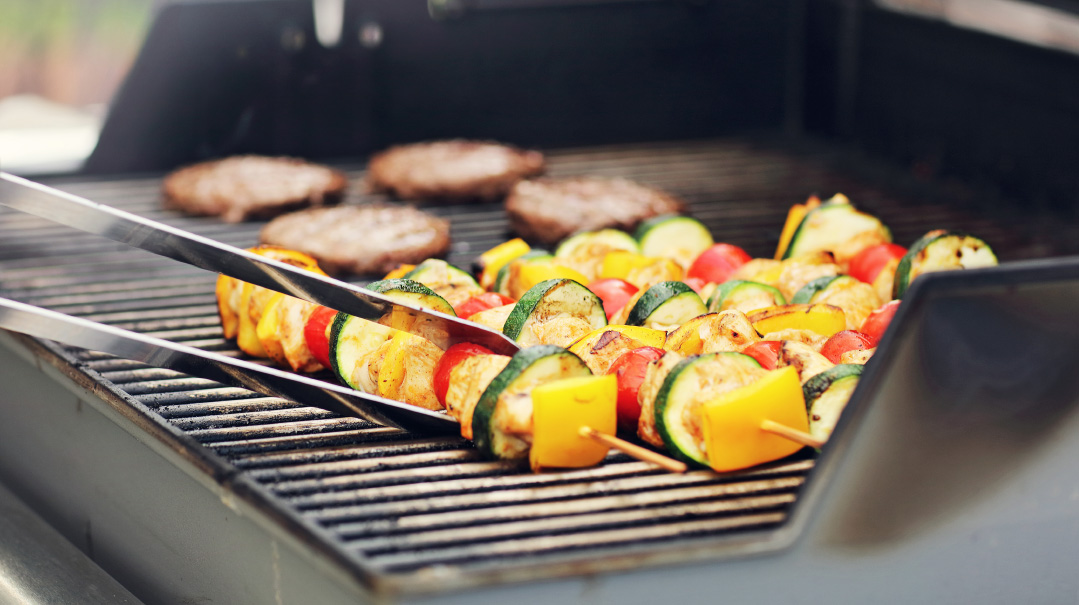What a Tzimmes!


Lawyer-turned-baker Leah Haddad, whose roots are Yemenite, was once asked to create a tzimmes recipe for a cookbook. She looked up the word tzimmes in a dictionary and discovered that its first-known use occurred in 1892, perhaps originating from the German zuomuose, or “side dish.” Leah commented, “The dictionary also shows ‘grimace’ as the only word that rhymes with tzimmes, which indeed describes my reaction when I was first introduced to the overly sweetened dish… Adding sugar to vegetables is definitely not part of the Jewish culinary tradition in which I was raised.”
I grew up in an Ashkenazic home, but as a child I also grimaced over tzimmes. Sweet was for cookies, not vegetables! But tzimmes was a staple of our Rosh Hashanah table, as it is for so many, and I warmed up to the idea over time.
I got out of having to make tzimmes myself by marrying a Moroccan. But even Moroccans eat sweet vegetables on Rosh Hashanah. I make a butternut squash soup every year, as per my in-laws’ minhag, and when I braise my lamb’s head (lamb cheeks, really), I add the simanim of gourd (more squash) and carrots, flavoring it with turmeric and cinnamon. Not so different, really…
It turns out that Ashkenazic tzimmes has a pretty interesting background. Alex Rapaport, the executive director of Masbia Soup Kitchen, says that tzimmes was first made popular by Rav Shlomo Ganzfried about 150 years ago, when he mentioned it in connection with Rosh Hashanah in his Kitzur Shulchan Aruch. “In Europe, people didn’t have dates and pomegranates and the other, more exotic foods that are part of the Sephardic Rosh Hashanah meal,” Mr. Rapaport explains. “So aside from the head of a fish — which was no novelty because people always ate the whole fish back then — and apples in honey, Ashkenazim only had carrots to use for a siman.”
Cut into orange and gold coins, carrots are reminiscent of the plenty we hope to receive in the new year. The Yiddish word for carrots, meren, can mean “plenty” or “more,” and is related to the Hebrew word marbeh. The Hebrew term, gezer, sounds like gezeirah and invites the yehi ratzon “shetigzor aleinu gezeiros tovos,” that Hashem should issue us only good decrees.
Tzimmes Makes History
Many people make tzimmes with meat, adding carrots and/or sweet potatoes to the roasting pan. Brynie
Greisman’s sister, Rochel Leah Levin, relates a fascinating piece of tzimmes history from her mother-in-law, the wife of Rav Avrohom Chaim Levin zt”l and a daughter of Rebbetzin Zlata Ginsburg (daughter of Rav Chatzkel Levenstein). Rebbetzin Ginsburg’s mother, Rebbetzin Chaya Levenstein, used to make tzimmes with meat in Kelm, White Russia.
“There were no refrigerators in the late 1800s, so food had to be made on Yom Tov so that it would stay fresh,” Brynie says. “Back then it was considered ‘fancy’ to have a stove!
“Rebbetzin Ginsburg continued making this tzimmes when she lived in the village of Mir, Poland, in the 1930s and 40s. Each family had one room in an apartment building, but there was only one stove that everyone had to share. Since she could only use the stove for a limited time, Rebbetzin Ginsburg would put her meat, carrots, and sweet potatoes into one pot — presto, a main and two sides! She’d put it on the burner in the morning, and it would be ready when she came home from shul.”
Oops! We could not locate your form.



